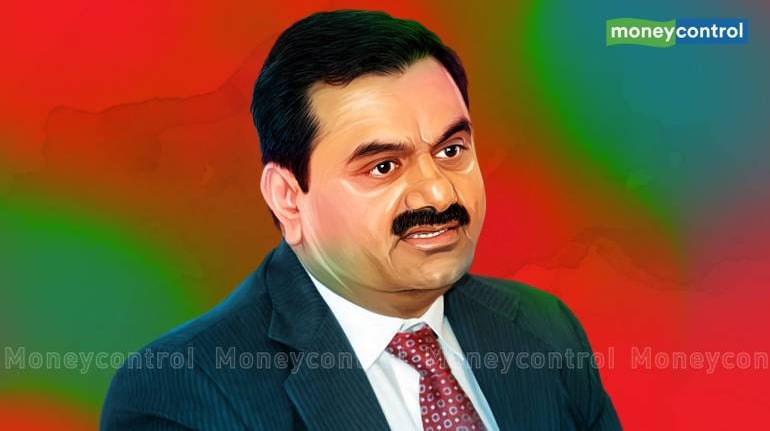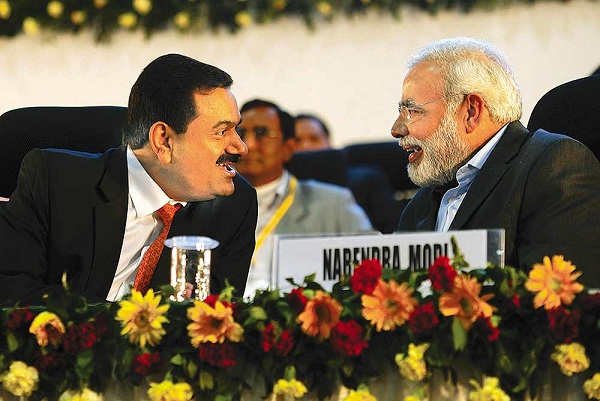Adani Green Energy — zero coverage. Adani Enterprises and Adani Total Gas — tracked by two brokerages. The only exception is Adani Ports. So what gives?
ASHISH RUKHAIYARJUNE 18, 2021 / 01:07 PM IST

One of the upshots of the recent tumble in shares of Adani group companies was the renewed attention on the poor analyst coverage of the ports-to-energy Indian conglomerate receives.
Analyst reports play an important role in helping investors make informed decisions and a low or nil coverage reflects poorly on the quality of the company. It is often looked upon as a sign of lack of genuine investor interest, which makes brokerages and analysts give the company a miss in terms of tracking it.
Take for example Adani Green Energy. The renewables company has zero coverage, as per data from Trendlyne, a capital market insights firm.
Data from Trendlyne further shows that there are research reports on Adani Enterprises by just two brokerages – ICICI Securities and HDFC Securities. Adani Total Gas is also tracked by just a couple of brokerages – ICICI Securities and Monarch Networth Capital.
The only exception is Adani Ports, which has seen coverage by over two dozen brokerages though the number of broking firms still tracking it has registered a fall.
RELATED STORIES
- Adani Group Stocks: Tracing Monday’s Fall, Annual Returns & Way Ahead
- Adani group stocks pare early gains even as NSDL says FPI accounts in Adani companies are not frozen
- Why Adani shares fell, why the FPI accounts were frozen and what are Sebi’s KYC rules, explained
“An analysis of available Bloomberg data on coverage shows that it is in single-digit for every Adani group company except Adani Ports, which has 26 analysts covering it,” said Gaurav Garg, Head – Research, CapitalVia Global Research.
A Meagre Number
That is a shockingly low number for a group of companies that have a combined market-capitalisation of nearly Rs 8 lakh crore.
Adani Green Energy has a market-capitalisation of Rs 1.74 lakh crore and is the 22nd largest listed company on the Bombay Stock Exchange. Adani Enterprises occupies the 28th position with a market-capitalisation of Rs 1.5 lakh crore and is closely followed by Adani Total Gas, Adani Transmission and Adani Ports & Special Economic Zone.
In a recent interview with CNBC-TV18, Adani Group Chief Financial Officer Jugeshinder Singh said some of the group companies are just a couple of years old and the analyst coverage will increase in future.
“We can get analysts to cover us. We have not chased them … we have not done any equity raise. We are hugely cash flow positive … Strategic investors have come in,” he said, adding that such investors do proper due diligence before putting money in any company.
Is that a plausible reason? There are many Indian companies that have listed only in the last couple of years but still are being tracked by several brokerages.
For example, Polycab India listed in 2019 and is being covered by 10 brokerages. Garden Reach Shipbuilders and Engineers made its debut on the bourses in 2018 and has reports by at least four brokerages. Varroc Engineering also listed in the same year as Garden Reach and sees coverage by eight broking firms.
Note that these firms are much smaller in size compared with the Adani Group entities.
Let’s look at another example.
Nestle India’s market-capitalisation is only a tad higher than that of Adani Green Energy. Still, the food and beverage company is tracked by brokerages such as Axis Direct, HDFC Securities, ICICI Securities, Motilal Oswal Securities, Geojit BNP Paribas, and Prabhudas Lilladhar, among others.
So, what gives?
One vital reason market participants attribute to the modest analyst coverage is the low free float in most of the Adani companies.
The Free Float Angle
A low free float means that promoters hold a high stake in the company that leaves less shares for public shareholders like foreign portfolio investors (FPIs) or the domestic institutional ones like insurance players or mutual funds.
In the case of Adani Green Energy, promoters’ stake was constant at 74.9% for many quarters before falling to 56.3% in the quarter ended March 31, 2021. Both Adani Enterprises and Adani Transmission, have promoter stake pegged at 74.9% while promoters hold 74.8% and 63.7% stake in Adani Total Gas and Adani Ports, respectively.
“The promoter holding in the group companies is quite high and hence the free float is quite low. There is not much interest from many foreign investors and domestic institutional investors and hence analyst coverage is very low,” said Shriram Subramanian, founder and managing Director, InGovern Research Services, a proxy advisory firm.
The frequent restructuring of companies has also made institutional investors wary of investing in the group. Brokerages do not find value in initiating coverage, according to market players.
The Ahmedabad-based conglomerate hived off its port business being from the flagship Adani Enterprises and listed its transmission business as a separate company, carved out from the power generation vertical.
While the intent of the restructuring was to enhance the valuation of the various business verticals by listing them as separate entities, the move seems to have made the analyst community wary of initiating coverage on the firms despite the significant surge in the valuations.
Garg said may be that’s the reason the group moved nearly 600% in the current rally while Nifty has given a return of 110% from the low of 7,500. But he said analysts are possibly staying away from covering the group stocks because prices are trading above 100x PE multiple and the group has a high debt of around ₹1.50 trillion. “The valuation is very high.”
The widely-held perception that the group is highly politically connected also acts as a catalyst for the reluctance of analysts, according to market participants.
“Investors and analysts are aware that it is a politically connected group. There have been regular spin-offs in terms of demerging certain businesses, making institutional investors wary of investing in the companies,” said Subramanian.
The Other Side
A section of market participants isn’t too concerned by the low free float. That is just the group’s way of doing business and does not necessarily reflect the quality of the listed firms, they say.
Arun Kejriwal of Kejriwal Research and Investment Services said Adani’s business approach is to have high group ownership and this is witnessed in almost all their companies. “Secondly, they believe in doing their work and not necessarily keeping the investing world aware on a day-to-day basis. While some people consider this as good and some as bad, this is their style,” he said.Kejriwal said the largest float in an Adani company is in Adani Ports where being a part of futures (derivatives segment) there is substantial activity in the share and the nature of business makes it well covered by research reports. “While this makes investors happy, this is also the reason why they are unhappy with other group companies on information.”
courtesy MoneyControl

Leave a Reply